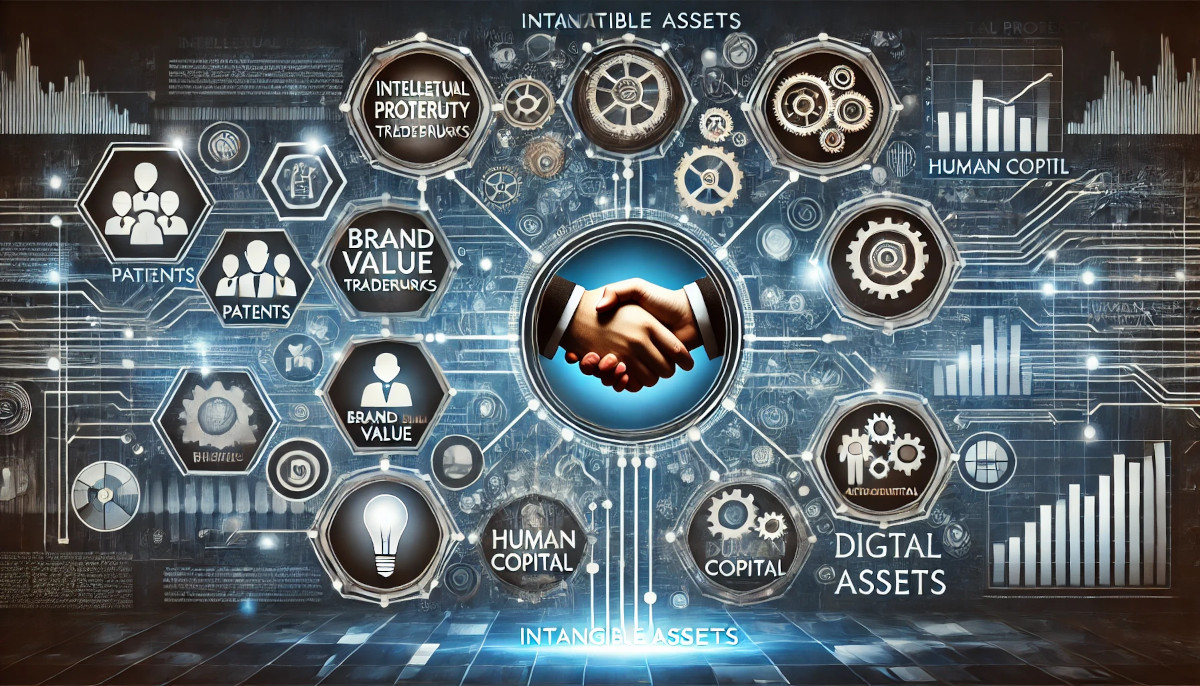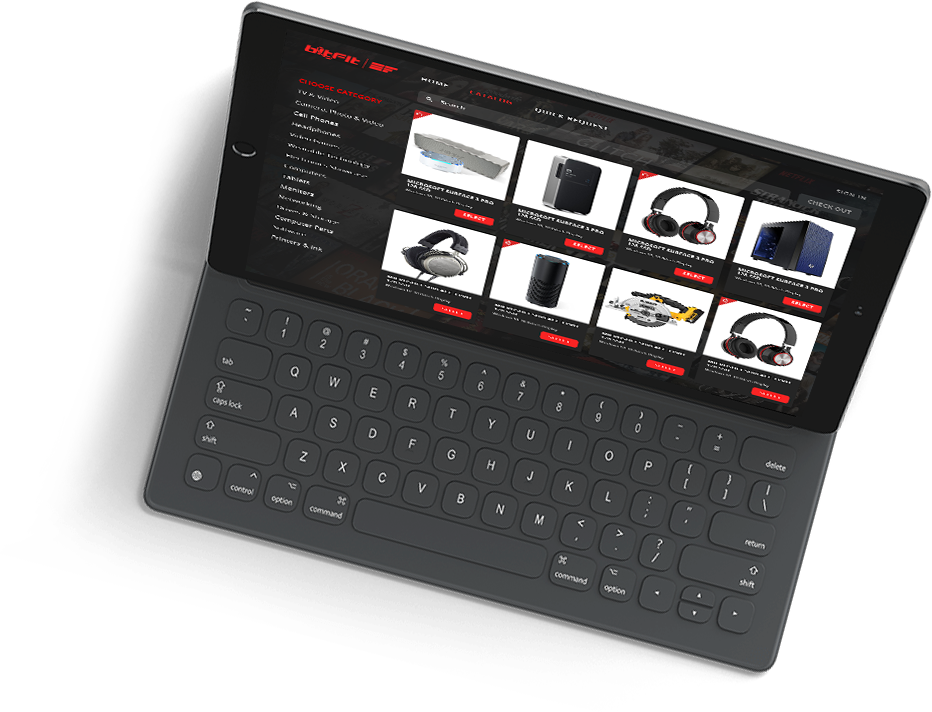
In today’s digital age, the value of a company is no longer tied solely to its physical resources. Intangible assets – those non-physical items such as intellectual property, brand value, and human capital – have become essential for companies looking to maintain a competitive edge. Despite their growing importance, managing intangible assets remains a complex challenge for many businesses. In this article, we’ll explore what intangible assets are, the challenges of managing them, and best practices to unlock their value for sustained business growth.
Types of Intangible Assets
Intellectual Property (IP)
Intellectual property (IP) includes patents, trademarks, copyrights, and trade secrets. These assets are crucial for companies that rely on innovation and creativity. Patents protect inventions, allowing businesses to maintain exclusive rights to new technologies, while trademarks secure brand identities and prevent competitors from using similar symbols or names. Copyrights protect creative works like literature, music, and software, while trade secrets ensure that proprietary business knowledge stays secure.
The effective management of IP helps companies differentiate their products, enhance their market position, and, in some cases, generate licensing revenue from others who use the technology.
Brand Value and Goodwill
Brand equity and goodwill represent the trust and loyalty that customers have in a business. Strong brands – like Apple or Coca-Cola – command premium prices and attract customer loyalty. Goodwill, on the other hand, arises during acquisitions when a company pays more than the book value of a business, accounting for the brand’s reputation, customer base, and intellectual property.
Maintaining and growing brand value is an ongoing process that involves nurturing customer relationships, delivering consistent product quality, and protecting the brand’s public image.
Human Capital
A company’s employees, their skills, knowledge, and expertise, are critical intangible assets. The success of many organizations is dependent on the specialized knowledge and creativity of their workforce. For example, consulting firms like McKinsey and technology companies like Google invest heavily in employee development to maintain a competitive advantage. By investing in talent, companies build a resilient and innovative workforce capable of driving growth.
Customer Relationships
Strong customer relationships are valuable intangible assets, providing companies with long-term revenue streams. A loyal customer base can be one of the most important contributors to a business’s stability and growth. These relationships can be maintained through loyalty programs, customer service excellence, and long-term contracts, but they must be actively managed to ensure consistent engagement.
Digital Assets
In today’s data-driven world, digital assets like proprietary data, algorithms, and software systems are increasingly important. Companies like Amazon and Facebook thrive on vast amounts of consumer data, using it to improve decision-making and personalize the customer experience. Securing and managing these digital assets is critical for maintaining their value over time.
Challenges in Managing Intangible Assets
Valuation Difficulties
One of the biggest challenges with intangible assets is determining their value. Unlike physical assets, which have measurable costs, the worth of intangible assets like brand value or intellectual property is often abstract and fluctuates based on market conditions. Companies use various methods to assign value, such as cost-based, market-based, and income-based approaches, but each has its limitations.
For instance, a brand’s value may change depending on customer perception, while intellectual property could lose value if competitors develop superior technology.
Legal Protection
Protecting intangible assets legally is essential, particularly with intellectual property. Companies must enforce copyrights, trademarks, and patents, especially in global markets where laws and regulations may vary. The risk of losing IP or proprietary knowledge is a constant threat, and businesses must invest in legal safeguards to protect themselves from infringement or misappropriation.
Monitoring and Tracking
Unlike tangible assets, which can be physically inventoried and tracked, intangible assets like customer relationships or brand reputation are harder to monitor. Human capital, for example, can be lost when employees leave, taking valuable knowledge with them. The challenge lies in continuously tracking and managing the performance of these assets to ensure they remain beneficial to the business.
Amortization and Accounting Challenges
From an accounting standpoint, intangible assets present challenges, particularly in how they are amortized over time. Companies must follow complex accounting standards (like IFRS or GAAP) to ensure proper reporting, and in cases like goodwill, these assets must be tested for impairment annually. The complexity of tracking and accounting for intangible assets makes it essential for businesses to have robust systems in place.
Best Practices for Managing Intangible Assets
Intangible Asset Identification and Documentation
The first step in managing intangible assets is creating an inventory of them. This involves identifying every asset – from intellectual property and brand value to customer relationships and human capital – and documenting them for future reference. Companies should establish systems to track the lifecycle of these assets and assess their performance over time.
Regular Valuation and Re-assessment
Intangible assets require regular revaluation to ensure that their value on the balance sheet is accurate. Market conditions, technological advancements, and shifts in consumer preferences can all affect an asset’s value. Conducting periodic assessments helps companies adjust their strategies and maintain accurate financial records.
Legal Safeguards
Strong legal frameworks are essential for protecting intangible assets. This includes registering patents, trademarks, and copyrights, as well as implementing non-disclosure agreements (NDAs) and non-compete clauses for employees with access to trade secrets. Businesses operating globally must also secure international protection, ensuring their intellectual property is safeguarded across borders.
Investment in Knowledge and Training
To develop human capital, businesses should invest in training and development programs that enhance employee skills and foster innovation. This not only increases the value of human capital but also creates a culture of knowledge sharing that benefits the organization as a whole.
Data Security and Privacy
For companies that manage large amounts of digital assets, cybersecurity is critical. Protecting proprietary data from cyber threats and ensuring compliance with data protection regulations, such as GDPR and CCPA, is essential for preserving the value of these assets.
Technology Tools for Managing Intangible Assets
Many companies are now using asset management software tools to assist with managing their intangible assets. Intellectual property management software helps track patents, monitor IP performance, and file new applications, while customer relationship management (CRM) systems allow businesses to keep a close eye on their interactions with clients.
The Role of AI in Intangible Asset Management
AI for Intellectual Property Management
Artificial intelligence (AI) is transforming how companies manage intellectual property. AI-driven platforms can automatically monitor the performance of IP, identify potential infringements, and assist in filing patent applications. These tools reduce the manual effort required to manage IP and provide real-time insights into an asset’s value and performance.
AI for Human Capital Development
AI tools are revolutionizing talent management by providing personalized training programs based on employee performance data. For example, platforms like bitFit AI deliver tailored training recommendations that enhance employees’ skills, monitor consistency, and generate reports on the outcomes of these interventions. By integrating AI, companies can develop human capital more efficiently, increasing their overall workforce value.
AI for Brand and Customer Data Analysis
AI can analyze vast amounts of customer data to improve brand management and customer relationship strategies. Through sentiment analysis, AI platforms can monitor public perceptions of a brand and recommend actions to improve or protect brand value. Additionally, AI-driven CRM systems can predict customer behaviors, enabling businesses to engage with clients more effectively and build stronger relationships.
AI for Risk Mitigation
AI tools help mitigate the risks associated with intangible assets. For instance, AI can track legal compliance, identify risks related to intellectual property violations, and monitor the potential for employee turnover, which could result in the loss of human capital. Automated reporting provides managers with data-driven insights that help them make better decisions and protect their intangible assets.
Case Studies of Successful Intangible Asset Management
Tech Industry: Intellectual Property and Patents
Apple’s extensive portfolio of patents provides a prime example of the value of intangible assets in the tech industry. Apple’s IP strategy allows the company to maintain its competitive edge and generate revenue through licensing agreements. The effective management of its intellectual property has enabled Apple to consistently lead in innovation and market dominance.
Consumer Goods: Brand Value and Customer Relationships
Coca-Cola’s brand equity is one of its most valuable intangible assets. The company invests heavily in marketing and customer engagement to maintain its brand’s dominance. Coca-Cola’s ability to build long-term customer relationships through loyalty programs and targeted advertising has ensured its position as one of the most valuable brands globally.
Human Capital: Talent Development in Consulting
McKinsey & Company relies on human capital as a core component of its value proposition. The consulting firm invests significantly in recruiting and developing top talent, which allows it to provide high-quality strategic advice to clients. McKinsey’s success is closely tied to its ability to manage and nurture its human capital, highlighting the importance of talent in creating value.
Measuring the ROI of Intangible Assets
Key Performance Indicators (KPIs) for Intangible Assets
Companies can measure the performance of intangible assets using various KPIs. For instance, brand equity can be evaluated through customer loyalty and market share metrics, while intellectual property may generate licensing income. Employee productivity and retention are critical indicators of human capital’s value, and customer satisfaction scores reflect the strength of customer relationships.
Financial Metrics for Evaluating Intangible Assets
Intangible assets also play a significant role in a company’s financial health. Stock prices and market valuation are often influenced by the strength of a company’s brand, its intellectual property portfolio, and its ability to innovate. Companies that effectively manage intangible assets see greater long-term profitability and resilience in the face of market competition.
Strategic Impacts
Well-managed intangible assets provide strategic benefits beyond immediate financial returns. They enhance a company’s reputation, create barriers to entry for competitors, and contribute to long-term growth. Companies like Google and Amazon, which prioritize intangible asset management, have demonstrated how leveraging these assets can lead to sustained business success.
Conclusion
Intangible assets are increasingly becoming the primary drivers of value in today’s economy. From intellectual property and brand equity to human capital and customer relationships, these assets play a critical role in determining a company’s success. However, managing intangible assets comes with unique challenges, from valuation difficulties to legal protection and tracking performance.
By adopting best practices such as regular valuation, legal safeguards, investment in employee development, and leveraging AI-driven tools, companies can effectively manage their intangible assets and unlock their full value. In doing so, businesses not only enhance their financial performance but also ensure long-term growth and sustainability in an increasingly competitive marketplace.

